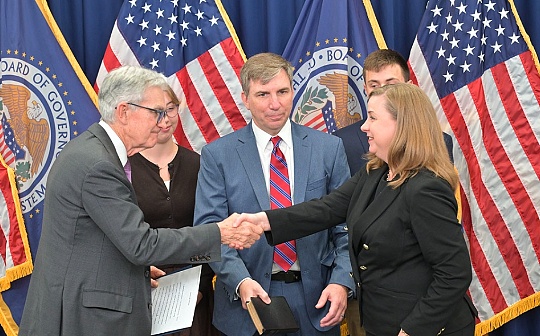The reality and bubbles under the Hundred-Time PE Carnival: Who is betting on the future of Circle?

Reprinted from jinse
06/10/2025·7DJessy, Golden Finance
After Circle went public, its price-to-earnings ratio soared to more than 150 times.
Although Circle currently has a market value of US$26 billion, according to the disclosure of the prospectus, its net profit in 2024 is only US$156 million.
Generally speaking, if a company belongs to a high-growth industry, it will have a higher price-to-earnings ratio. The high price-to-earnings ratio reflects investors' expectations that the company's net profit will increase significantly in the future. The surge in Circle's price-to-earnings ratio is precisely because investors have high expectations for the future development of Circle. .
Why are there so many people buying Circle, which has a price-to-earnings ratio of 100 times? Who is buying it?
Who is buying it
First of all, it is a traditional financial giant. BlackRock is the main manager of USDC's reserve assets. According to Circle's official website data, the scale of the Circle reserve fund is US$53.3 billion. This part of the funds is mainly managed by BlackRock, accounting for about 90% of its reserve scale. BlackRock not only deeply participates in the Circle ecosystem, but also directly subscribes about 10% of the shares in the IPO. In addition, Blackstone Group also plans to acquire about 10% of its shares in the IPO, according to Circle's filing with the U.S. Securities and Exchange Commission.
According to Coindesk, on the first day of Circle's listing, ARK Invest, a subsidiary of Mutou, also bought nearly 4.5 million shares.
Traditional financial giants represented by BlackRock may not be Circle's short-term profits, but the potential of stablecoins as the core financial infrastructure in the future.
Before the IPO, many institutions have become investors in Circle, such as Goldman Sachs, Accel, General Catalyst, IDG Capital, Baidu, Everbright Holdings, CICC Jiazi, Yixin, etc. These institutions first began betting on Circle in 2016.
It is precisely because these strategic investors have a strong resource network and market influence that these large institutional investors believe that Circle can use the power of these shareholders to obtain support in terms of funds, technology, market channels, etc., thereby enhancing its comprehensive strength and development prospects.
Of course, retail investors are also actively buying Circle. Discussions in China and other platforms show that some investors regard Circle as a weather vane for "crypto compliance" and even compare it with traditional payment giants such as Visa. On the first day of its listing, the trading volume reached 47.109 million shares, equivalent to approximately US$3.941 billion.
Why buy it?
The surge in price-to-earnings ratio means that investors are not paying for Circle's current situation, but are more betting on Circle's future.
First of all, the scarcity premium of the compliance moat. Circle's investment in regulatory compliance is an advantage that competitors are difficult to replicate. The GENIUS Act, which was previously passed by the United States, has formulated a detailed regulatory framework for stablecoin issuers. The provisions of the bill are in line with Circle's operating philosophy and practice, and also provide a more stable legal environment for Circle to carry out related businesses.
More expectations come from the future. Circle is the leader of compliant stablecoins. With the United States' continued betting on the crypto track, Circle may have great potential in RWA, DeFi and other fields.
People's crazy buying is also related to changes in the macro environment. With people's betting on the US interest rate cut in September and the decline of tariff risks, overall high-risk assets are regaining market attention. Circle chose to go public when the market investment sentiment was high. At this time, the rebound in the prices of cryptocurrencies such as Bitcoin has also driven the market's attention and confidence in related industries, and the liquidity of US stocks is also recovering. At this time, investors' demand for Circle's stock is strong, which drives stock prices to rise rapidly.
However, excessive PE also shows a potential risk, that is, "whether there is an excessive bubble", and excessive PE shows "over high expectations and relatively low profits".
The risk still exists. First of all, Circle is facing great competitive pressure. Currently, USDT still accounts for nearly 70% of the market. New players such as PayPal 's PYUSD are strongly entering the market with a huge user base. Strict regulation may also prompt large banks to issue stablecoins directly. It is difficult for Circle to dominate the track of compliant stablecoins.
But in terms of investment, Circle's current high PE phenomenon is also a high-risk manifestation. As an overvalued stock, any negative news, such as slowing profit growth, regulatory factors, etc., may trigger investors to sell it. For retail investors, whether to buy at this time needs to reasonably evaluate the risks.


 chaincatcher
chaincatcher

